#andrzej sekuła
Photo










“All right, ramblers, let’s get ramblin’.”
Reservoir Dogs, 1992.
Dir. & Writ. Quentin Tarantino | DOP Andrzej Sekuła
34 notes
·
View notes
Text
American Psycho (2000)
Directed by Mary Harron
Cinematography by Andrzej Sekuła
Starring Christian Bale, Chloé Sevigny, Willem Dafoe, Jared Leto and Reese Witherspoon




"There is an idea of a Patrick Bateman; some kind of abstraction. But there is no real me: only an entity, something illusory. And though I can hide my cold gaze, and you can shake my hand and feel flesh gripping yours and maybe you can even sense our lifestyles are probably comparable… I simply am not there."
0 notes
Photo



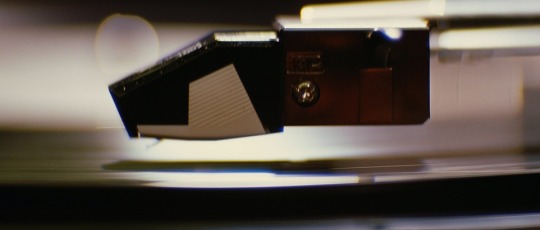
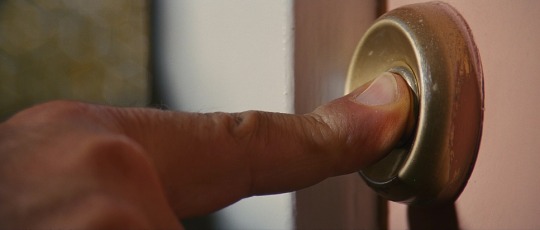


PULP FICTION (1994) - Extreme close-ups and inserts
DIRECTOR: Quentin Tarantino
CINEMATOGRAPHER: Andrzej Sekula
#pulp fiction#1990s films#1990s#Quentin Tarantino#Andrzej Sekuła#cinema#cinematography#cinestill#cinematographer#extreme closeup#insert#movie#stills#film stills#movie stills
253 notes
·
View notes
Text






Reservoir Dogs (1992)

Director - Quentin Tarantino, Cinematography - Andrzej Sekuła

"I don't wanna kill anybody. But if I gotta get out that door, and you're standing in my way, one way or the other, you're gettin' outta my way.

#scenesandscreens#reservoir dogs#quentin tarantino#harvey keitel#steve buscemi#Michael madsen#Tim roth#Edward bunker#chris penn#Andrzej Sekuła#lawrence tierney
414 notes
·
View notes
Photo
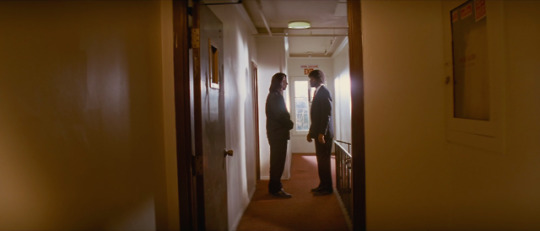

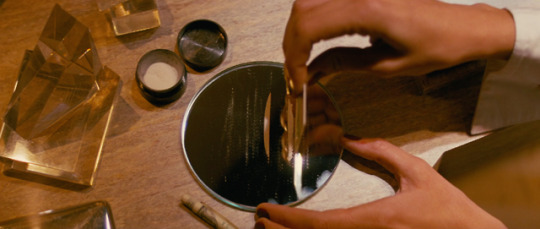

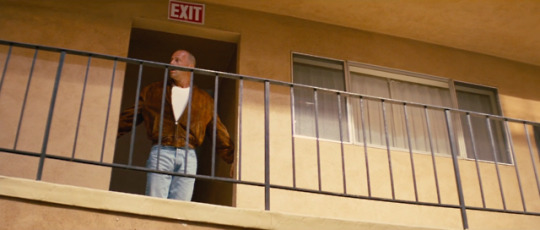
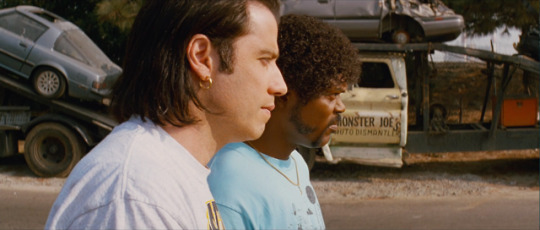


Pulp Fiction (1994) dir. Quentin Tarantino, D.P. Andrzej Sekuła
If my answers frighten you then you should cease asking scary questions.
#me making this photoset: violence? what violence?#pulp fiction#bruce willis#angela jones#amanda plummer#maria de medeiros#john travolta#samuel l jackson#tim roth#samuel l. jackson#quentin tarantino#andrzej sekuła#amanda watches movies#mine#filmedit#film edit#movieedit#movie edit#pulp fiction edit#pulpfictionedit#vincent vega#jules winnfield#butch coolidge
77 notes
·
View notes
Photo

American Psycho (2000) dir. Mary Harron
#american psycho#mary harron#cinematography#andrzej sekuła#american cinema#guinevere turner#film stills#movies#aesthetic
662 notes
·
View notes
Text










American Psycho (2000)
dir. Mary Harron
dop: Andrzej Sekuła
#2000#american psycho#mary harron#horroredit#horroredits#filmedit#movieedit#cinemaspam#userstream#motionpicturesource#cinemapix#dailyflicks#fyeahmovies#doyouevenfilm#filmdaily#userfilm#film caps#screen caps#patrick bateman#christian bale
755 notes
·
View notes
Text
2ku Twosday 2×2×2×2×2×2 + 2 + 2 +1: Cube
Ah, would that we could have a more numerically auspicious number this Twosday 22/02/2022! The twosiest day for the next two hundred years! By which point, who knows, the Gregorian calendar may no longer be in use.
To celebrate the number two, I had the idea of watching a series of cult Canadian horror films all themed around a very twosy shape, the cube. After all, what is a cube but the result of repeated doubling?

Like I said, very twosy shape.
So yeah, we’re gonna watch the movie Cube (1997)! And its sequel Cube 2: Hypercube (2002) and prequel Cube Zero (2007). For ‘Toku Tuesday’ purity, it would be nice if I could show the Japanese remake of the first movie that came out last year, but it’s not on nyaa, presumably bc it hasn’t seen the BD release yet. Maybe another day.
So what’s Cube about? It’s about people dying in a big cube full of lethal traps! That’s basically it! It’s a kind of guro-y psychological horror thing I guess.
youtube
Why is there a big death cube? This question is pointedly not answered, though characters speculate. The cube was built by some kind of mysterious bureaucracy, and one of the prisoners helped design it; Wikipedia terms the film’s ‘Kafkaesque’ tone one of the major reasons for its cult following.
The writer and director of the first film, Vincenzo Natali, developed the idea from the 1961 Twilight Zone episode Five Characters in Search of an Exit, which also imagines five characters of diverse origins thrown together in a confined space. To gain funding, he shot a short film Elevated that takes place entirely in a... lift (¬¬), selling the money men on the idea of a film taking place in confined spaces.
The Cube itself was designed by, who else, a mathematician:
The fictional Cube device in the film was conceived by mathematician David W. Pravica, who also served as the film's math consultant.[19] It consists of an outer cubical shell (the sarcophagus) and the inner cube. Each side of the outer shell is 434 feet (132 m) long. The inner cube consists of 263 = 17,576 cubical rooms (minus an unknown number of rooms to allow for movement, as shown in the film), each having a side length of 15.5 feet (4.7 m). There is a space of 15.5 feet (4.7 m) between the inner cube and the outer shell. Each room is labelled with three identification numbers, for example, 517 478 565. These numbers encode the starting coordinates of the room and the X, Y, and Z coordinates are the sums of the digits of the first, second, and third number, respectively. The numbers also determine the movement of the room - the subsequent positions are obtained by cyclically subtracting the digits from one another, and the resulting numbers are then successively added to the starting numbers.[20]
To shoot this, they built a single cube-shaped room, whose colour could be changed with gel panels. The tiny budget could only stretch to five colours of panel rather than the planned 6.
Natali apparently wrote a script for a followup film taking place outside the Cube, but destroyed it when it became clear that this film wouldn’t get made. Instead, the film saw two sequels by other directors: Hypercube brought in Polish cinematographer Andrzej Sekuła, trying to make a more abstract scenario with a 4D hypercube with odd gravitational effects, although the CGI of the time struggled to portray this convincingly; Zero saw Ernie Barbarash, the producer of Hypercube, step into the director’s chair to tell a story taking place, in part, outside the cube. These films go a little further to try to explain the existence and purpose of the cube, bringing in a concept of a government inducing amnesia in prisoners and sending them into the cube in lieu of outright execution. It is, apparently, less psychological horror and more gore oriented.
They all get... mixed reviews, but I think the premise sounds very interesting - I actually had the whole trilogy on DVD for years and... never watched it, for some reason, so tonight I feel like remedying that. If that sounds like fun, drop by in a couple hours at around 7pm UK time (may be a bit later, I’ll keep you posted!) at twitch.tv/canmom...
8 notes
·
View notes
Text
The Dark Knight trilogy reboot fancast (part 2)



Written by Peter Hyams,

Mary Harron,
Luc Besson,
David Gordon Green,
Stephen Gaghan


and Hossein Amini
Composed by John Cale



Cinematography by Andrzej Sekuła

Edited by Conrad Buff IV
and Mike Hill
1 note
·
View note
Photo
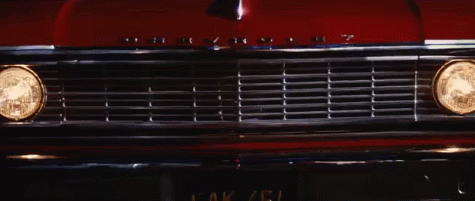
Pulp Fiction
1994
Director: Quentin Tarantino
Cinematographer: Andrzej Sekuła
#Pulp Fiction#Quentin Tarantino#Tarantino#John Travolta#Uma Thurman#film#film gif#gif#movie#cinema#cinematography#movie gif
803 notes
·
View notes
Text
Pulp Fiction (1994)
Directed by Quentin Tarantino
Cinematography by Andrzej Sekuła
Starring Samuel L Jackson, John Travolta, Uma Thurman, Bruce Willis and Ving Rhames




"I’m thinkin’ maybe it means you’re the evil man, and I’m the righteous man, and Mr. 9-millimeter here, he’s the shepherd protecting my righteous ass in the valley of darkness. Or it could mean, you’re the righteous man, and I’m the shepherd, and it’s the world that’s evil and selfish. Now, I’d like that. But that shit ain’t the truth. The truth is, you’re the weak and I’m the tyranny of evil men. But I’m tryin’, Ringo. I’m tryin’ real hard to be the shepherd."
1 note
·
View note
Link
0 notes
Text
Joey doesn’t share food Thanksgiving turkey shirt
Joey doesn’t share food Thanksgiving turkey shirt

The shooting style of Pulp Fiction by cinematographer Andrzej Sekuła (Hackers, Four Room, Reservoir Dogs) has a nostalgia, the color scheme that Tarantino intentionally blends is very “ancient” closer to the movies of the 70s. is a film from 1994. Pulp Fiction’s music also evokes the taste of the 50-60s for viewers, with music by Chuck Berry, Elvis and The Beach Boys. The way Tarantino…
View On WordPress
0 notes
Text
“Jackie Brown” is thought of as outlier in Quentin Tarantino’s career, largely because it is (thus far) the only time he adapted pre-existing material.
But a couple other things stand out to me as why is it markedly different.
Notably, it’s the only Tarantino film shot by cinematographer Guillermo Navarro (“Pan’s Labyrinth”, “Pacific Rim”, “Desperado”); it brings his customary vivid use of colors and his slightly soft, smooth focus length. It greatly adds warmth to the film and the characters interacting.
This is very different from the more grimey, worn out look of his first two films by Andrzej Sekuła, and a huge deviation from the visceral bombast Robert Richardson has brought to all his films since “Kill Bill”.
(The exception being “Death Proof” which Tarantino did cinematography himself, to pure exploitation zen).
Most importantly, “Brown” is a hang out film. It cares even less about the plot than usual Tatantino (as is Elmore Leonard’s want) and really puts a lot of attention on the characters.
And love. The violence is totally subdued in this film, and the characters connect to each other, at times carefully, and times in edge. But it treats them with a great deal of care.
Even the most violent scene in the film, between Samuel L. Jackson and Robert De Niro is done with a aftermath of sadness, and the immortal line “What happened to you, man? Your ass use to be beautiful”.
Consider the violence the characters endure in “Reservoir Dogs” or “Pulp Fiction”; or at the very opposite end of the spectrum, “The Hateful Eight”. We don’t spend time with those characters, we are stuck with them, and they all get massacred horribly.
“Jackie Brown” gets better, or more endearing at least, with each viewing. More then any other Tarantino film, it grows upon repeats. The characters behavior and the way they interact with each other (even while some try to outsmart others) expands vastly.
Even little things, like the way De Niro rocks in his chair, saying nothing, as he watches the older black woman do a little song for him. So wonderful and hilarious.
Also, personally, I find this Tarantino’s best soundtrack. The greatest of becoming more familiar with this music really helps its re-watches.
I remember the first time I saw this film, some guy got annoyed at the long take on Jackie’s face near the end, her crying as she has her financial freedom but not someone she really wants. It plays damn near the entire song. But that’s the whole point of the film, her emotional journey and having security. And much the same for the others.
We like these characters, Tarantino does too, and with a masterful hand, so we drift back to them, because once is never enough.
#jackie brown#quentin tarantino#pam grier#robert forster#samuel l jackson#robert de niro#michael keaton#long reads#film#art
9 notes
·
View notes
Text
First Take Classics: Reservoir Dogs- once upon a time in cinema history...
SYNOPSIS: When a simple jewelry heist goes horribly wrong, the surviving criminals begin to suspect that one of them is a police informant.
With his 9th film (Kill Bill is ONE film split in to two parts folks, his words, not mine) hitting UK cinemas on Wednesday, it feels right to look back at how Quentin Tarantino got his start in this industry.

Much like his later works, Tarantino writes and directs this one incredibly well, opting to not show the heist taking place and defining that non-linear storytelling approach he would utilise on 1994′s Pulp Fiction, and for a 99 minute film, it gets a lot done in that short running time. The cinematography from Andrzej Sekuła is good, and of course, that soundtrack has become archetypical of the heist/robbery genre- even more recent releases like last year’s American Animals take clear influences from this masterclass.

As for the cast, it’s hard not to argue with it, as they all absolutely kill it in this one. Harvey Keitel, Tim Roth, Steve Buscemi, Tarantino himself, Michael Madsen... what can be said about this group of talents that hasn’t been said since the film was released in 1993? Yes, this is a violent film. But it’s the characters who we really root for. We don’t know their real names, their histories, and as we get further along, we really do see how this group of strangers simply lose their minds to keep their cover.
THE VERDICT
Reservoir Dogs is an acquired taste for modern audiences. But considering the impact this film had on the genre, it’s hard not to argue that this film set the standard for a character-driven heist film back in the day, and effectively kicked off a long and enjoyable journey for Tarantino in this industry.
RATING: 4/5
0 notes
